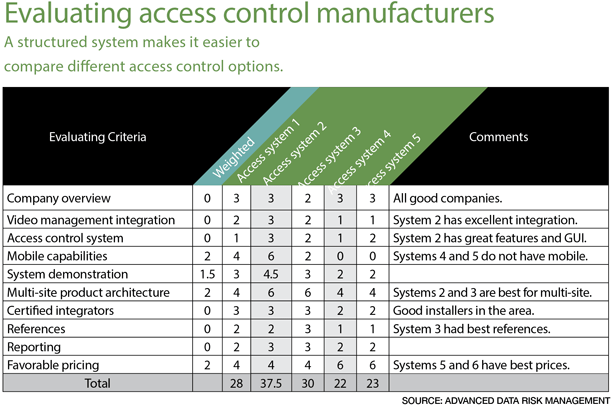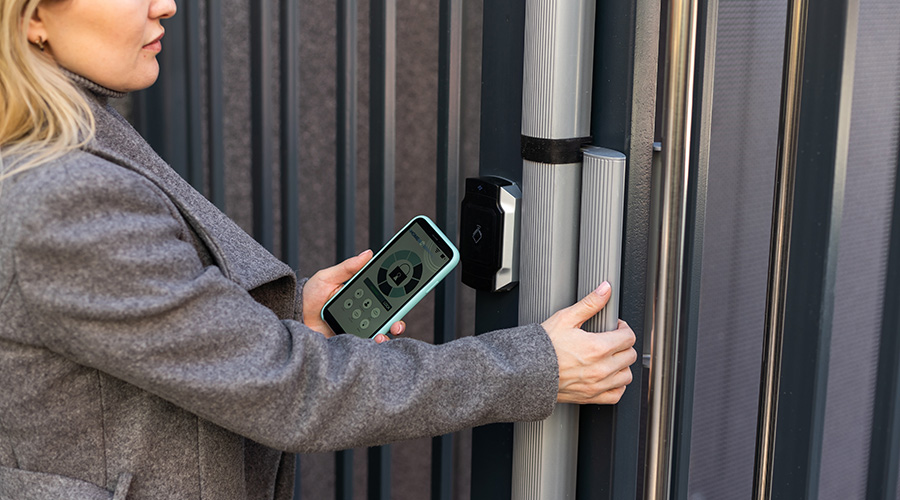Choosing The Right Access Control System
Because access control systems can be in place for a long time, getting system selection right the first time is absolutely critical. Here's how to evaluate systems and manufacturers.
There are many access control systems on the market today, and all have strengths and weaknesses. These systems can be very expensive to install or replace, and once a system is selected it is typically in place for long periods of time, even decades. Clearly, selecting the right system is critical for all colleges and universities.
Manufacturers can be found by searching online, attending trade shows, reading publications, and checking with peer and aspirant institutions. Consultants are also knowledgeable about the various systems on the market and likely will have firsthand experience and relationships with multiple manufacturers.
There are many factors to consider when evaluating access systems. (See “Evaluating access control manufacturers” below.) A very important consideration is integration with an existing or new video management system and visitor management system. Most systems today can integrate so alarm events will automatically pull up video showing what caused the alarm to occur. This can save valuable time investigating and responding to alarm event. Having the ability to track visitors using the access control system can also be valuable. Some of the more sophisticated visitor management systems today can integrate with access control systems so all door transactions will be managed and recorded in one system.

It is worthwhile to consider advanced features of the access control system. “It is important to look to the future when selecting an access control system,” says John O’Connor, associate director for a Boston-area university. “Technology and business needs can evolve quickly so look for a flexible platform that can appropriately scale with your organization and creativity.” Advanced features could include using smart phones as access credentials or having a mobile app for monitoring alarms and cameras remotely.
Matt Isgur, senior manager, campus safety and security infrastructure, MIT, agrees that it’s important to think about a roadmap for the access control system — not only what it is today, but what it can be tomorrow. “This might include the ability to handle emergency phone calls while automatically calling up nearby cameras, plotting them on a dynamic map, and automatically locking down doors all within seconds of an incident,” he says. “Choosing the right security system to handle all the needs of the future is one of the most important foundation decisions you can make.”
Once the systems have been evaluated, it is good practice to visit with peer and aspirant institutions that utilize the preferred systems. Constituents from critical departments such as IT, public safety, and administration should attend the visits if possible. Ensure the modules and functions that are most critical to your campus are observed and discussed during the visit.
It is important to ensure that the system selected can be supported by the existing IT system architecture. These systems require access cards, card readers, badge printers, wiring, access panels, servers, and switches. All will need regular support and maintenance. Depending on the access systems requirements, some existing devices already installed on campus such as card readers and panels may be able to be reused, resulting in significant savings.
A security systems administrator should also be identified during the manufacturer-selection process. This individual(s) or business unit will be responsible for programming the system, maintaining the database, troubleshooting issues, coordinating with the system integration firm, and keeping the system up-to-date. It is best to incorporate feedback from the systems administrators when selecting the appropriate system for your institution.
During the manufacturer-selection process, be wary of features that the manufacturer says will be “available in the next quarter.” The feature will likely be untested and not provide the benefit your campus is hoping to obtain for quite some time.
Most systems are able to support campus “lockdown” buttons or other customized actions. These features can be difficult to implement but could save lives during incidents like a violent intruder on campus.
Lastly, use high security “smart” access control cards as opposed to traditional “proximity” cards. The smart cards offer better encryption and security. This is important as proximity cards are easily hacked by equipment that can be readily obtained on the internet.
Related Topics:
















